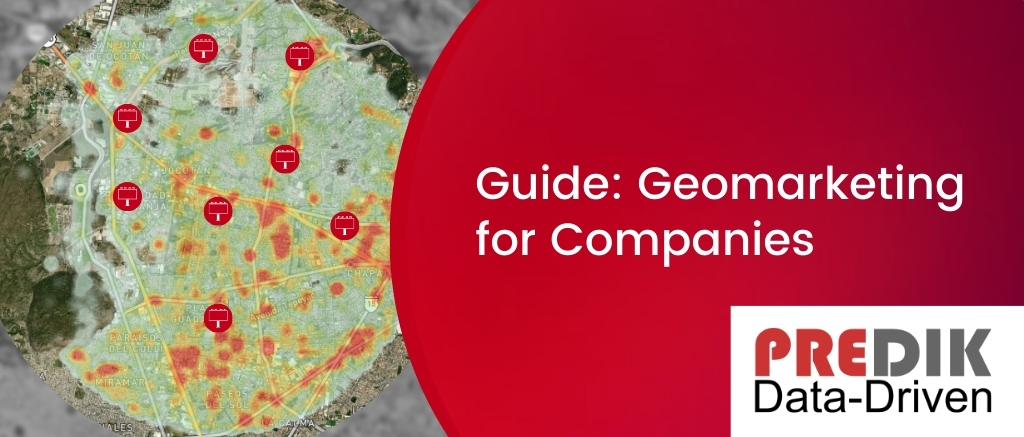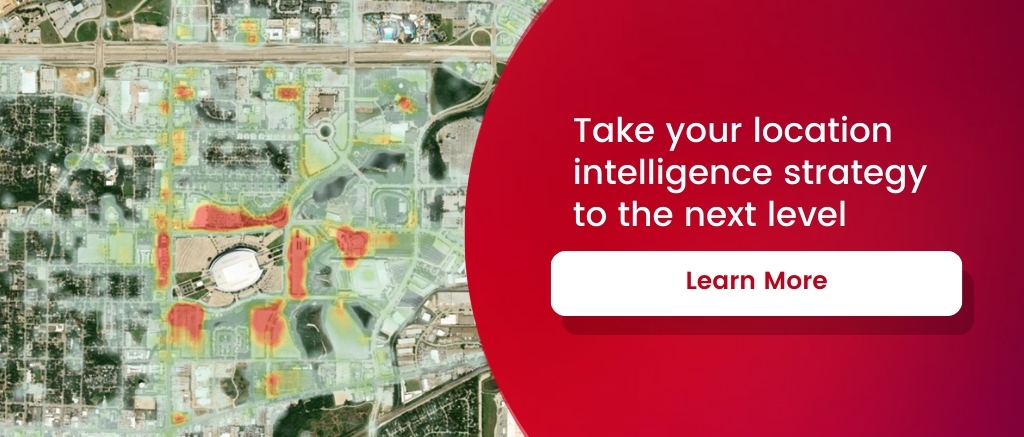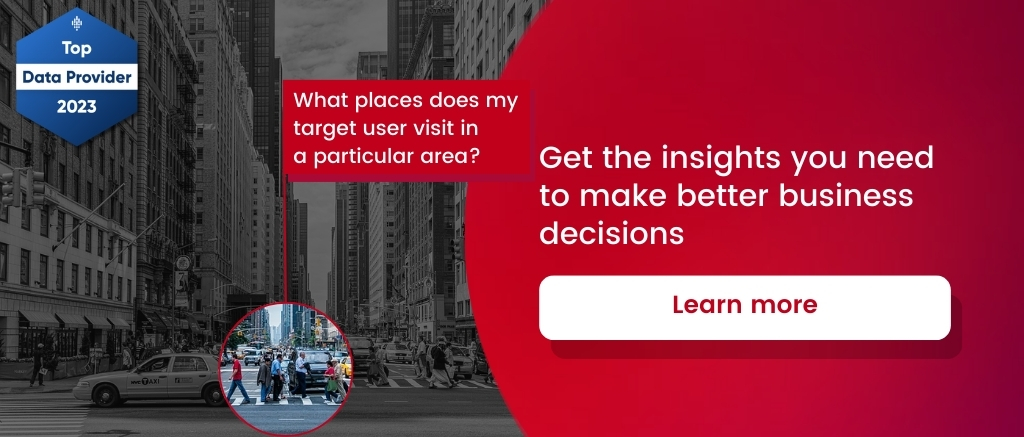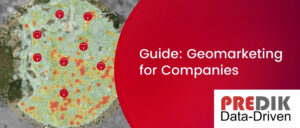Marketing is a constantly evolving field influenced by different factors, including technological advancements, changes in consumer behavior, regulatory modifications, and more. Marketing teams must know the importance of remaining up-to-date with the latest trends. This is not just for developing effective strategies to enhance business growth and increase brand value but also to stay relevant and competitive in today’s fast-paced market.
In this context, geomarketing has become a valuable tool for businesses to analyze, comprehend, aim at, and interact with their customers based on location. Using geographic data like POI Data, Foot Traffic, and advanced Big Data technologies (With competitive data), geomarketing technologies empower organizations to provide customized and meaningful strategies to their target audience.
This guide will cover the following topics:
What is Geomarketing?
Geomarketing describes any form of marketing that uses location data to analyze and understand customer behavior within a target area and then develop marketing strategies based on mobility insights, consumption behaviors, and visitation patterns.
For example, geomarketing insights can help retailers understand how different promotions and activations affect their visitation volumes into their physical stores.
The impact of geomarketing in numbers:
- 30% of users worldwide already use location-based marketing services.
- Optimizing searches with geolocation has generated twice as many clicks as regular advertising.
- 60% percent of consumers use their mobile devices to perform searches based on geolocation.
- A user’s probability of visiting a store after seeing location-based advertising doubles when using these strategies.
A new era of marketing based on location
Since the early days of traditional marketing, geomarketing has come a long way. The rise of technologies such as geographic information systems (GIS), geocoding, store location data and location intelligence tools has opened up a new world of possibilities.
GIS technology, for example, enables the overlaying of a population’s demographic, psychographic, and behavioral characteristics on a digital map. This results in a more precise and visual analysis of any target market.
Moreover, companies can use different sources of information, such as Google Maps, to create detailed customer profiles, offer personalized messages, and even provide targeted promotions in near real-time. Gone are the days of mass advertising and generic messages. Now, marketing and sales teams have better tools to increase their effectiveness, accuracy, and reach.
Understanding the different levels of geomarketing analysis
There are different levels of analysis involving geospatial and location approach:
- Regional: It refers to analyzing a geographic region comprising more than one country whose members share a similar market.
- Country, State, City: This analysis divides the region into local entities, from a division by countries, states/provinces, or cities.
- Local: This is particularly helpful when there are clear boundaries between different sectors or neighborhoods within a city.
- Local (Micro): This is the analysis of the market in the immediate area of a specific business or geographic location (around a building, near a store, among others)
- Nano Marketing: One of the newest inclusions is “nano marketing”, which allows using geomarketing tools within a commercial establishment. For example, push app notifications within a store depend on which aisle the business’ customers are in.
How are brands using geomarketing?
Wendy’s: Wendy’s used visitation insights to grow its sales by 44% in the Australian market. Integrating visit and transaction data, the brand developed local strategies to attract new consumers and gain market share.
Domino’s: Domino’s uses geolocation strategies to optimize its distribution routes in different parts of the world. This way, the company can identify high-demand areas and send drivers accordingly.
Additionally, the company has developed a GPS tracking system that allows customers to track the optimal route of their deliveries.
Yum Brands!: Yum Brands is the parent company of fast food chains, including KFC, Taco Bell, and Pizza Hut. Each brand has a unique methodology for analyzing customer demographics and purchasing behavior, which helps them identify potential locations for their new stores.
Using advanced mapping technology, they can analyze areas based on population density, traffic patterns, and current competition. This approach has allowed Yum Brands to open new stores strategically and increase its revenue.
Why should your business use geomarketing?
Geomarketing has become a “smart” solution to get closer to customers and serve them better. Some common goals you can achieve by using geomarketing are:
- Increase multi-channel traffic.
- Attract more store visitors.
- Build brand awareness.
- Get more users into behavioral marketing strategies.
Better site selection and relocation strategies
Geomarketing methodologies can assist you in determining the best locations to place your new physical stores for your site selection strategies. By answering key questions, such as where your target audience spends their time, how they move between stores, where they spend more time, or where they make purchases, you can identify strategic areas where your brand should establish a presence.
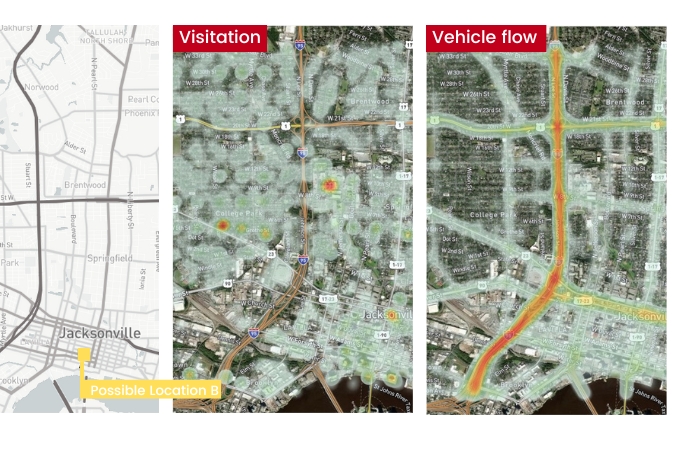
Increase visitation volumes
Geomarketing data insights can be very granular. For example, a brand can understand the most and least active hours and compare them with their competitors.
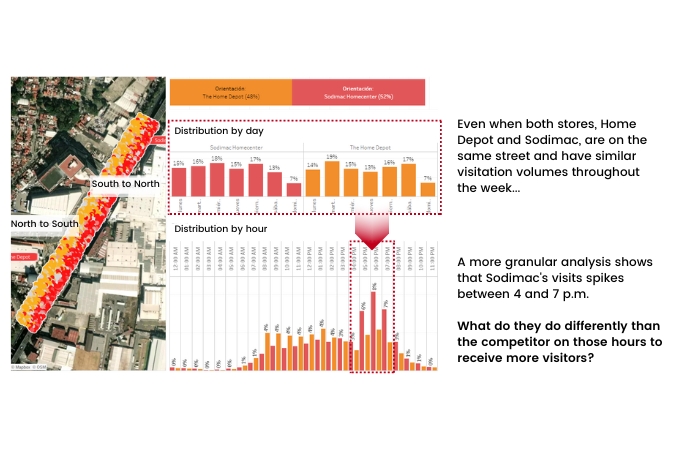
With this information, marketing teams can better build strategies based on customer behavior throughout the week and day. Brands can also benchmark which of their competitors’ strategies is getting better results.
Better market segmentation
Geomarketing tools are helpful for companies that segment their market based on geography. Businesses can use reliable geographical location insights to tailor their messages, products, and marketing strategies for each segment.
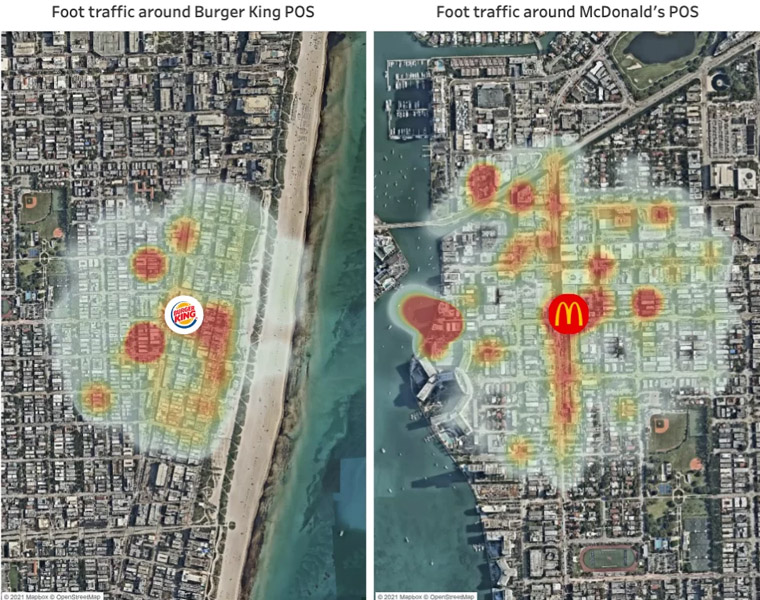
Custom marketing strategies
Companies can improve their marketing actions using geomarketing by analyzing customer data such as demographics, location, and behavior. Marketing campaigns can be adapted to specific audiences, increasing the probability of participation and conversion.
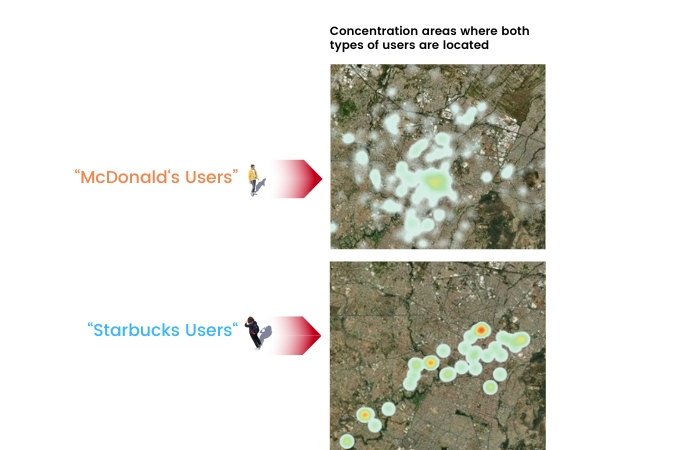
This means businesses can allocate their marketing budget more efficiently, reducing waste and maximizing their return on investment (ROI).
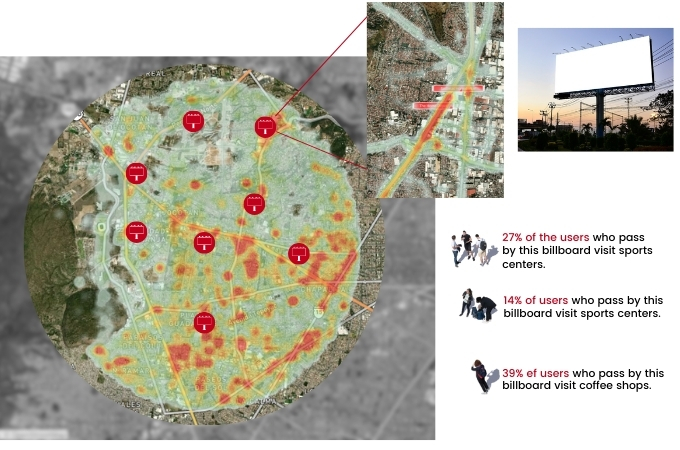
Notice that geomarketing-based strategies do not apply only to digital advertising. Marketers can use location intelligence to understand the best places to place OOH advertisements.
For example, a new coffee shop brand can analyze where “Starbucks users” move around a target city and place OHH ads in those areas.
Resource optimization
Geomarketing strategies can “guide” companies in optimizing their marketing efforts by targeting areas with more potential customers. This approach involves analyzing geographic data to identify such areas and directing marketing activities toward them. By focusing their resources in the right places, marketing teams can save time and money while increasing their chances of success.
Improve logistics and planning
Geomarketing can do more than just advertising and marketing campaigns. It can also assist with business planning and logistics.
Employing geographic data can streamline distribution routes, decrease transportation costs, and improve supply chain efficiency and route planning. This leads to improved inventory management, quicker delivery times, and a more satisfactory customer experience.
How does Geomarketing work?
A step-by-step explanation of how Geomarketing works could be as follows:
Step 1. Collect location-based data. The first step is to collect location data from various sources such as GPS tracking, mobile apps, social media, and online searches.
Step 2. Analyze the data obtained. Once the necessary data has been collected, it is essential to analyze it based on the insights you want to get. This step involves specialized tools based on Big Data, Machine Learning, and Artificial Intelligence.
Step 3. Customer segmentation. In this step, market segmentation is performed based on factors like location, age, gender, interests, and behavior.
Step 4. Creating targeted campaigns. After segmenting the market, the next step is to create marketing campaigns tailored to the needs and preferences of each user group.
Step 5. Execution of the campaigns. Measuring the effectiveness of marketing campaigns requires tracking engagement rates, clicks, and conversions using data analytics tools.
Step 6. Measurement results. Finally, you must measure your marketing campaigns to determine their effectiveness. This measurement may involve using data analytics tools to track metrics such as engagement rates, clicks, and conversions.
Opportunities and challenges in 2024
Geomarketing presents significant business opportunities to improve marketing strategies and increase customer engagement. It allows for targeted strategies, which enables businesses to reach the right audience at the right time and place. Geomarketing solutions also assist in location-based promotions, allowing companies to provide personalized offers and incentives to clients and improve commercial and marketing decision-making.
However, the adoption of geomarketing also poses challenges. Data privacy and compliance with regulations like the General Data Protection Regulation (GDPR) are critical concerns as businesses collect and utilize customer location data. Interpreting and analyzing large volumes of location data can also be challenging, as organizations need robust analytics tools and expertise to extract meaningful insights and make informed marketing decisions.

